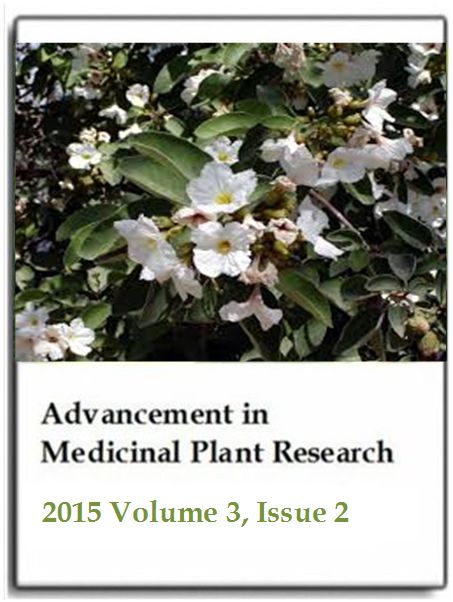Chemical composition and acaricidal activity of Salvia nilotica essential oil against Rhipicephalus appendiculatus
Christine T. Nyabayo, Josphat C. Matasyoh and Charles MwendiaAdvancement in Medicinal Plant Research
Published: April 28 2015
Volume 3, Issue 2
Pages 46-54
Abstract
Cattle tick, Rhipicephalus appendiculatus, is one of the major vectors of East Coast Fever causative pathogen. The estimated economic loss associated with East Coast Fever in East African countries is US$ 168 million annually. Development of resistance and side effects associated with synthetic acaricides has triggered intense research efforts towards natural products such as essential oils due to their efficacy and safety. The aim of this study was to determine the acute toxicity of essential oil of Salvia nilotica (Sage) against R. appenduculatus. The essential oil was extracted by hydrodistillation and its chemical composition determined by gas chromatography-mass spectrometry. The oil was dominated by monoterpenes (39.39%) and sesquiterpenes (21.78%). The major monoterpenes were β-phellandrene (11.52%) and δ-3-carene (6.62%). Only caryophyllene oxide (6.85%) was found to be the major component for sesquiterpenes. Bioassays were determined through contact toxicity and mortality data was collected after 3, 6, 12, 24 and 48 h. Probit regression analysis was used to estimate concentration dependent mortality for LC50 and LC90 values in mg/ml. The essential oil exhibited potent acaricidal activity with LC50/LC90 values of 1.8/3.3, 1.7/3.1, 1.5/3.0, 1.37/2.85, 1.37/2.55 mg/ml against the larvae and 3.9/5.8, 2.7/4.7, 2.2/4.1, 2.1/3.8 mg/ml against the adults of R. appendiculatus at 3, 6, 12, 24 and 48 h, respectively. The results obtained indicated that the essential oil of S. nilotica exhibits potential as a promising acaricide.
Keywords: Acaricide, essential oil, Rhipicephalus appendiculatus, Salvia nilotica.
Full Text PDF
